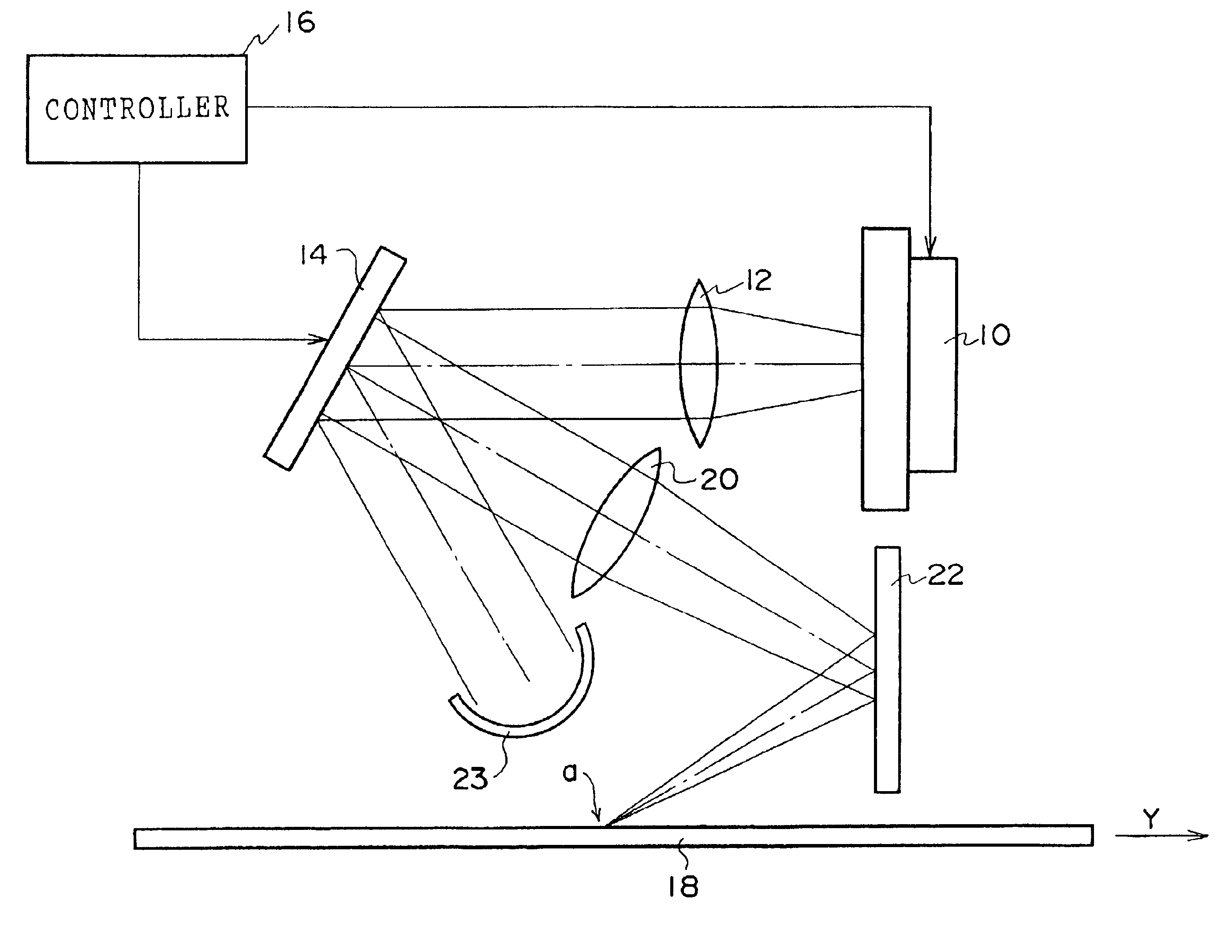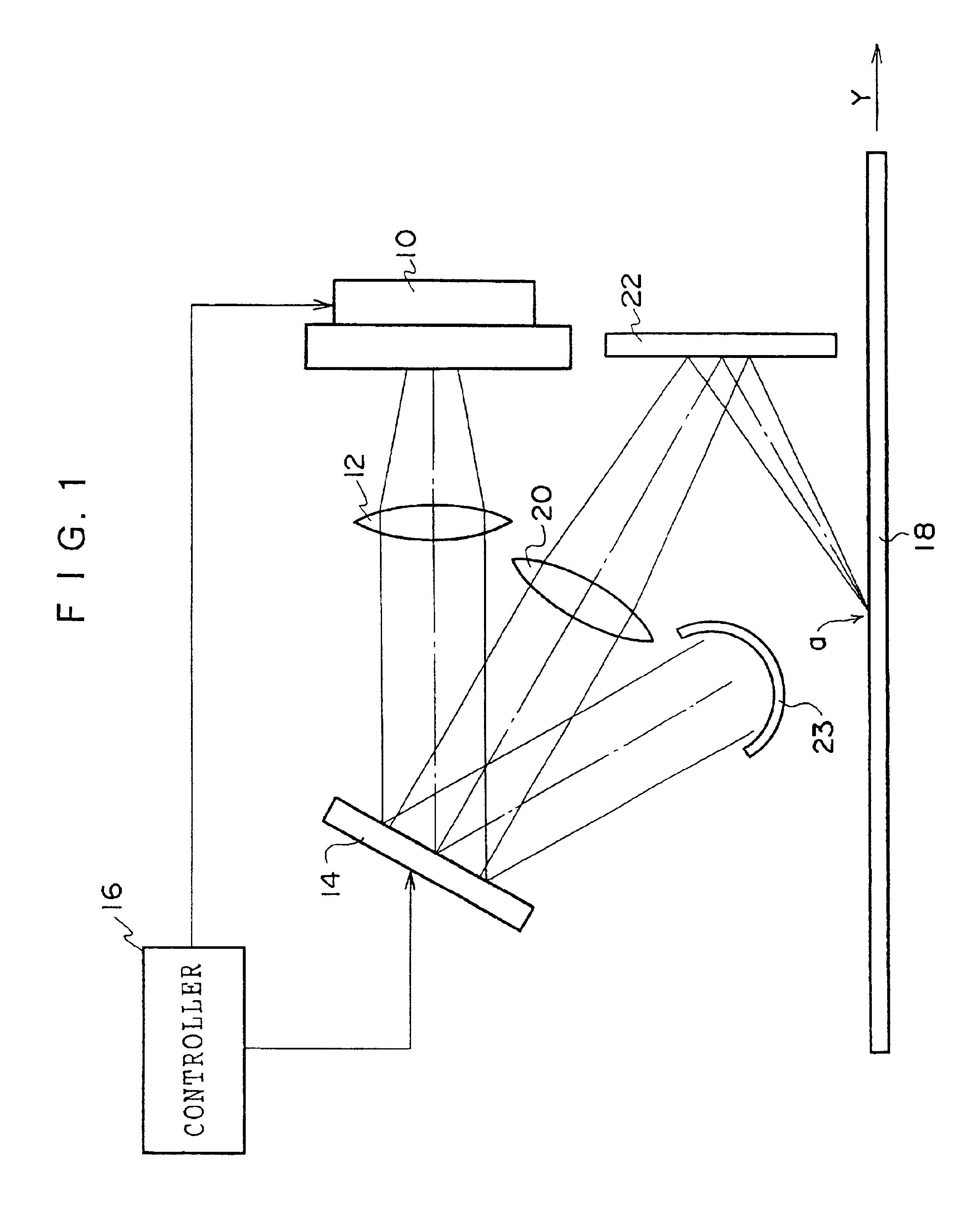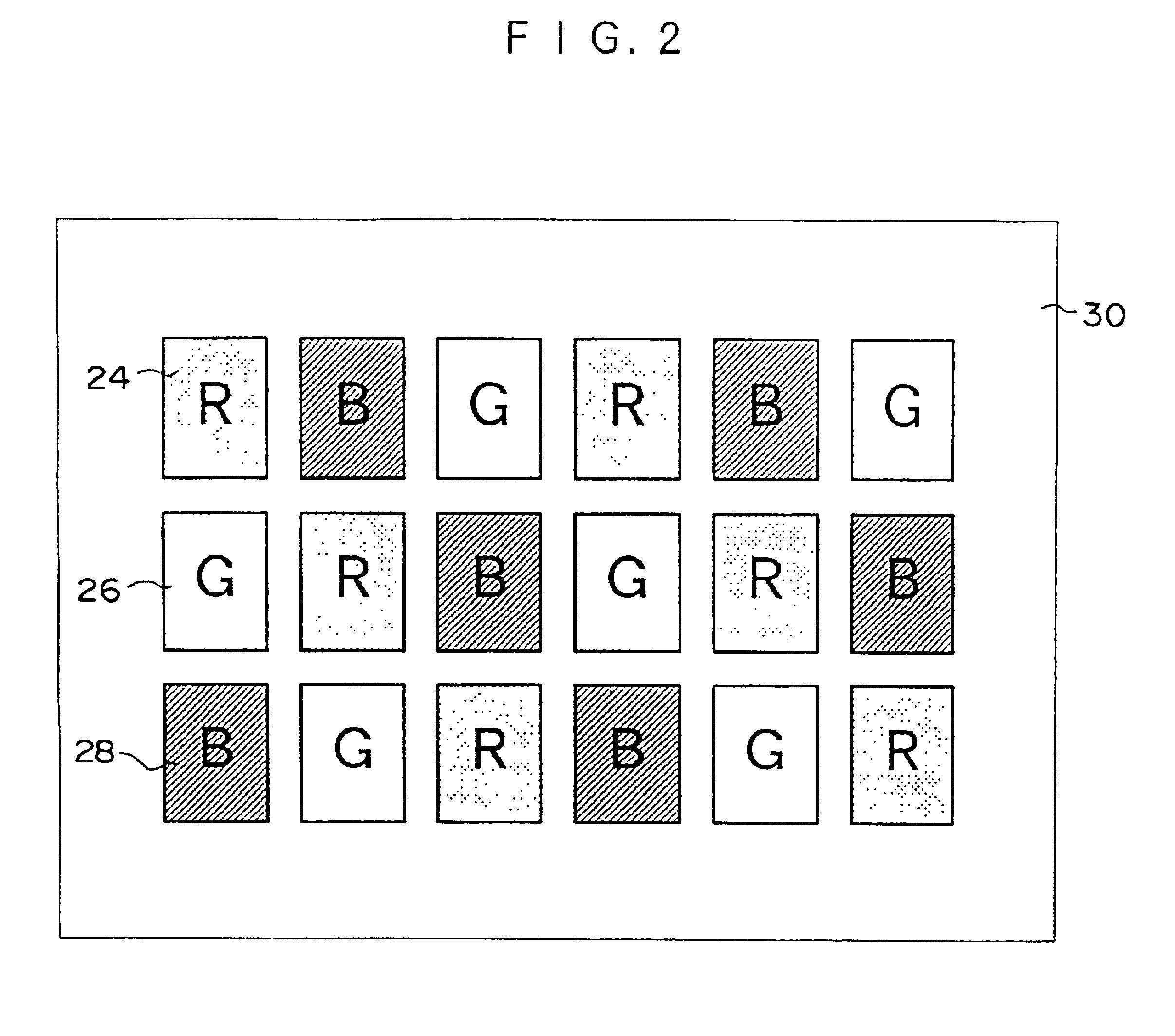Image recording device
a recording device and image technology, applied in the direction of digital output to print units, instruments, printers, etc., can solve the problems of inability to obtain the amount of light required, low luminous efficiency, white lamps, etc., to prevent crosstalk generation, small and inexpensive
- Summary
- Abstract
- Description
- Claims
- Application Information
AI Technical Summary
Benefits of technology
Problems solved by technology
Method used
Image
Examples
first embodiment
[0025]FIG. 1 shows the schematic structure of an image recording device according to a first embodiment of the present invention. As shown in FIG. 1, the image recording device includes a light source 10 formed by organic electroluminescence elements (hereinafter referred to as “organic EL elements”). A collimator lens 12 which collimates light beams emitted from the light source 10 is disposed at the light-exiting side of the light source 10, and a reflection type light modulator (referred to as a “DMD”, i.e., Digital Micromirror Device) 14 is disposed at the light-exiting side of the collimator lens 12. The light source 10 and the DMD 14 are connected to a controller 16.
[0026]On the optical axes of the light beams reflected by micromirrors of the DMD 14 when they are on (which will be described later), a condenser lens 20 and a reflecting mirror 22 are disposed so as to focus the light beams reflected by the DMD 14 onto a recording surface of a color photosensitive material 18. Fu...
second embodiment
[0039]Hereinafter, a second embodiment of the image recording device of the present invention will be described. The second embodiment is an example in which organic EL arrays, in which the organic EL elements of R, G, and B are linearly arranged respectively, are used as the light source, and external modulation is carried out by using a DMD structured by linearly arranging the micromirrors. Since the present second embodiment is substantially the same as the first embodiment, only the point different from the first embodiment will be described.
[0040]First, as shown in FIG. 7, the light source 10 includes the organic EL arrays in which a red organic EL array 24R formed by linearly arranging the red organic EL elements 24 in a predetermined direction, a green organic EL array 26G formed by linearly arranging the green organic EL elements 24 in a predetermined direction, and a blue organic EL array 28B formed by linearly arranging the blue organic EL elements 28 in a predetermined di...
third embodiment
[0046]Next, a third embodiment of the image recording device of the present invention will be described. The third embodiment is a case in which the organic EL arrays, in which the organic EL elements of R, G, and B are linearly arranged respectively, are used as the light source, and external modulation is carried out by using a liquid crystal light shutter array.
[0047]As shown in FIG. 9, the image recording device includes the light source 10 comprised of the organic EL elements of the respective colors of R, G, and B. The collimator lens 12 is disposed at the light-exiting side of the light source 10 and collimates light beams emitted from the light source 10. A liquid crystal light shutter array 56, which serves as a transmission type light modulator, is disposed at the light-exiting side of the collimator lens 12. The light source 10 and the liquid crystal light shutter array 56 are connected to the controller 16. On the optical axes of the light beams transmitted through the l...
PUM
 Login to View More
Login to View More Abstract
Description
Claims
Application Information
 Login to View More
Login to View More - R&D
- Intellectual Property
- Life Sciences
- Materials
- Tech Scout
- Unparalleled Data Quality
- Higher Quality Content
- 60% Fewer Hallucinations
Browse by: Latest US Patents, China's latest patents, Technical Efficacy Thesaurus, Application Domain, Technology Topic, Popular Technical Reports.
© 2025 PatSnap. All rights reserved.Legal|Privacy policy|Modern Slavery Act Transparency Statement|Sitemap|About US| Contact US: help@patsnap.com



